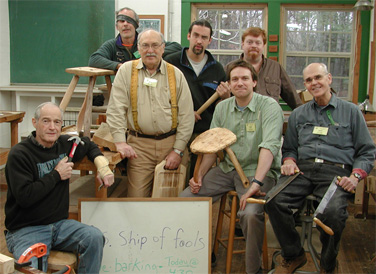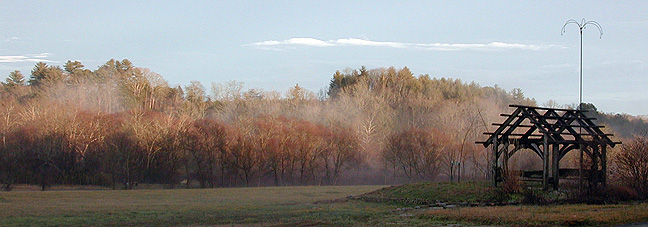
The Stools for Fools class was intended to teach green timber joinery. The plan was to take a slab of wood (sawmill waste) and turn it into a stool of the student's own design.
When making a green timber joint, a dry tenon is inserted into a wet mortise. When the mortise material dries it shrinks and forms a very tight joint which is probably superior to a glue joint. There is quite a bit of science involved as wood shrinks at different rates and amount depending on grain orientation, type of wood, moisture content and ambient conditions. The idea is to get a good tight and attractive joint without splitting the wood.
Jim had previously taken a class in green timber joinery when he constructed a ladder back chair entirely using hand tools (draw knife).

